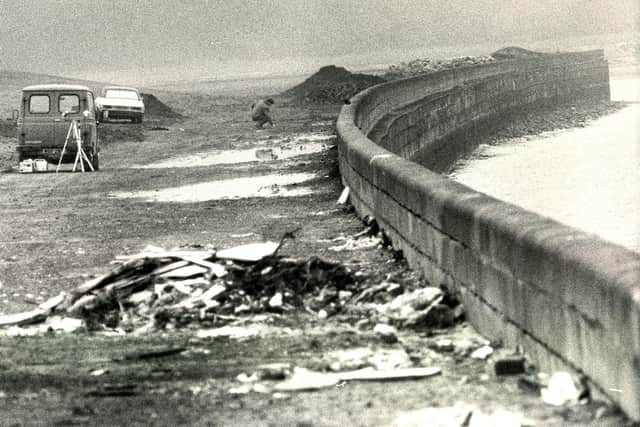Forty years ago, I tried to catch Sheila Anderson's killer. I still think he can be brought to justice – Tom Wood
Sheila Anderson was a sex worker who plied her trade in nearby Leith. She had fallen victim twice in her short life, once to the person who killed her, but first to heroin. It would not have been counted as a drug death, but it should have been.
She was one of hundreds of young people who became addicted and died during the first wave of heroin which swept through Scotland in the early 80s. Her story was tragic and familiar. A bonny young woman, she was happily married with two children when she was introduced to heroin. It was cheap, gave tremendous highs, and was hugely addictive. Within months she was hooked and, despite the desperate efforts of her family, she slipped away. Nothing mattered except the drug.
Advertisement
Hide AdAdvertisement
Hide AdThere are three ways to finance a heavy heroin habit: be rich, steal a lot, or sell your body. For Sheila, there was only one option so she ended up on the street, living hand to mouth. Addiction took a heavy toll. As she lay in the mortuary that night, she looked twice her 29 years.
A murder investigation was launched under DCI Jim Wilson, a hugely experienced detective. No stone was left unturned in the hunt for Sheila’s killer, every scrap of evidence was gathered and retained. As officers dug into dark places, a new reality crawled out. The street sex industry had changed.
Gone were the older, streetsmart women, familiar in any port, replaced by young girls, mostly heroin addicts, and, like Sheila, chaotic, cheap and utterly vulnerable. Their clients had changed too, gone were the sailors and salesmen. Instead, there were violent predators, drug dealers and pimps.
The street sex scene was no longer a nuisance to be policed with a light touch, but a serious public safety challenge. Police, council and health staff worked together with groups like Scotpep, providing a safer environment and help for the girls. It was just as well, for coming over the horizon was HIV/Aids. This was now a public health issue. But the joint-working approach proved its worth. The feared epidemic did not happen and the worst of violent criminals were spotted and chased. The sex industry can never be totally safe, but it was made much safer.
However, Sheila’s killer was never found. Much has changed since her death. The street scene and the licensed saunas have all but disappeared as the sex industry has gone online, out of sight, where we can only guess and fear. The tip of the iceberg occasionally breaks the surface so that we know young women and men are still being trafficked, criminals still prey on the vulnerable, and women like Sheila still struggle with addiction. Heroin has never loosened its death grip in the 40 years that have passed.


For me, Sheila’s case is personal. I was a detective on that first murder squad, and I know there is forensic evidence. I hope our highly successful Historic Cases Unit can shine its bright, new scientific lights on this case. It’s not too late to deliver the justice that Sheila deserves.
Tom Wood is a writer and former Lothian and Borders Police detective